DOCUMENTATION OF SOUTH MASONIC TEMPLE BUILDING (1921) DEMOLITION CONTINUED, PART 6
This entry was posted on January 31 2018 by Eric
by eric j. nordstrom and ornament chicago
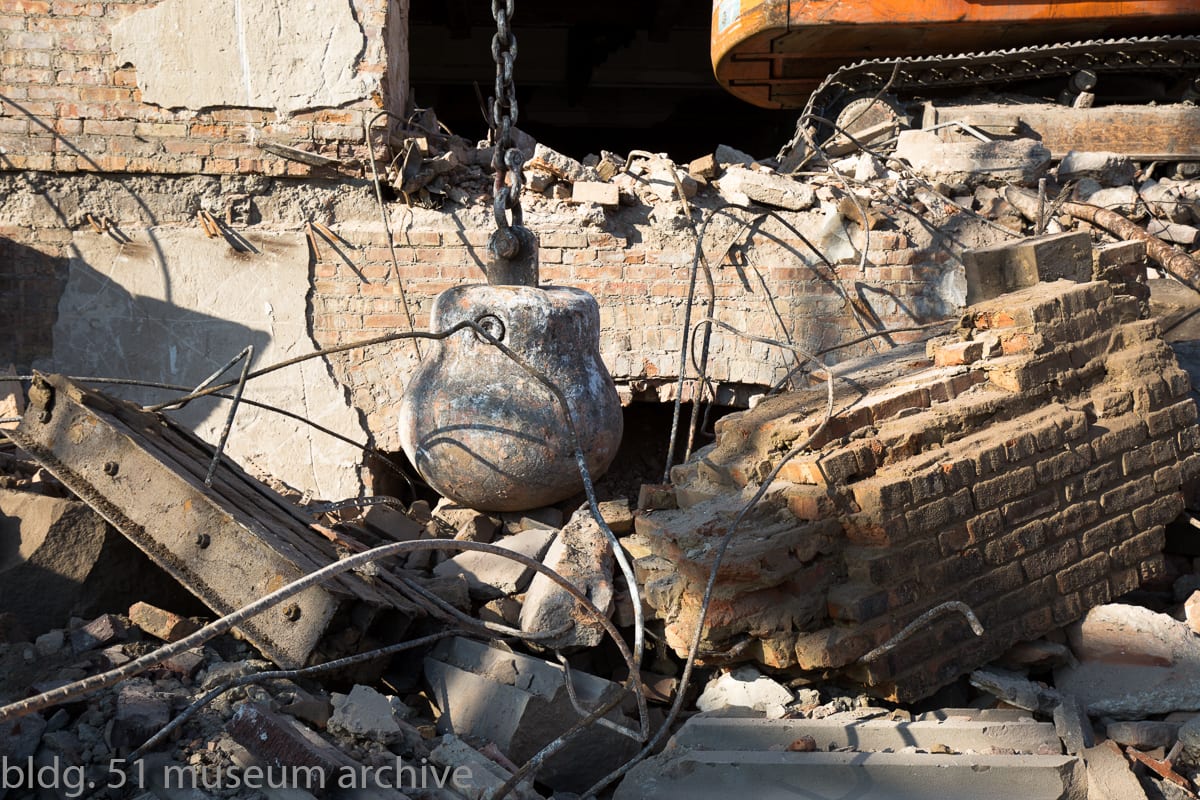
images of the south side masonic temple building (1921) taken this morning. a single bedford limestone fluted column with ionic capital remains standing. the majority of clarence hatzfeld's ornament is on the ground in ruin or buried in a landfill. i'm beginning to seriously doubt whether i will live to see (i'm 40) demolitions, where saving any and all ornament becomes the norm rather than the exception.
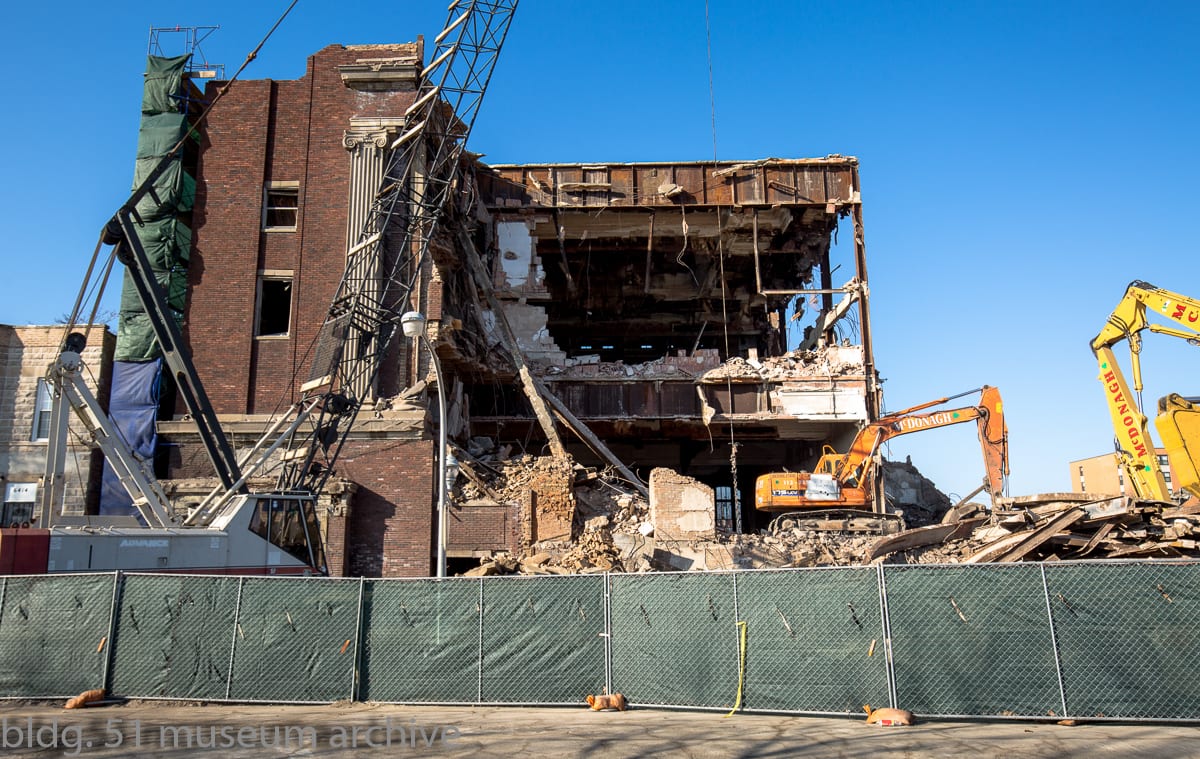
what makes the callous destruction of this ornament and in particular the columns particularly disheartening is the creation of these majestic pieces is both a feat of engineering and design. as described in part 3 illinois limestone had to be laid in the same orientation in which it was extracted.
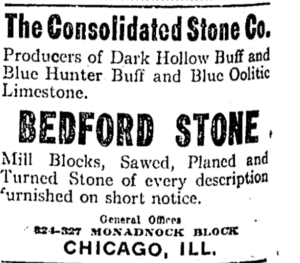
with bedford stone this became unnecessary; the stone possessed equal strength in all directions and demanded no preferential direction of splitting. because of this it could be cut at any angle. consequently it could be manipulated in a variety of ways: sawing, planing, hand worked, etc.
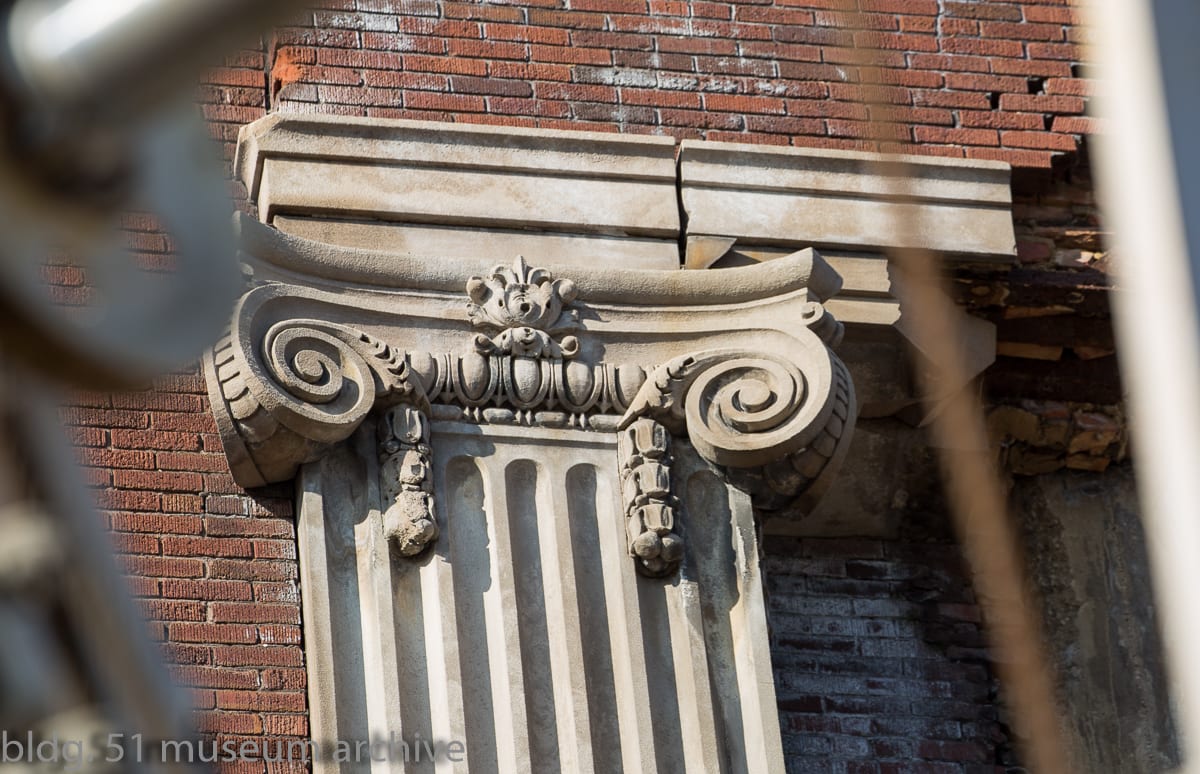
the south side masonic temple columns were made on a lathe. long blocks of stone were centered in the machine and revolved while the cutter hewed them to their desired size. the size of the south side masonic temple’s columns was considerable - they were more than a story high - and when they were quarried they would have been impossible to lift without the use of a derrick.
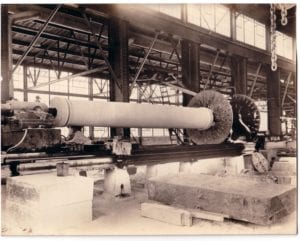
once they were lifted (and possibly cut) they were loaded onto rail cars - in the case of the temple’s columns each would have required its own car.
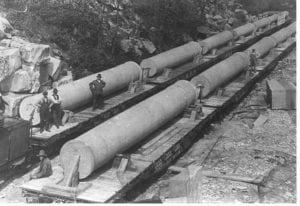
they would have then made their 250 mile journey from ‘the belt,’ the five by thirty-five mile area from which bedford limestone hails, to chicago. the confluence of price, shipping location, abundance of supply, and modern production methods enabled this delicate orchestration to occur, time and again, to allow for the construction of countless chicago buildings to be made of bedford limestone.
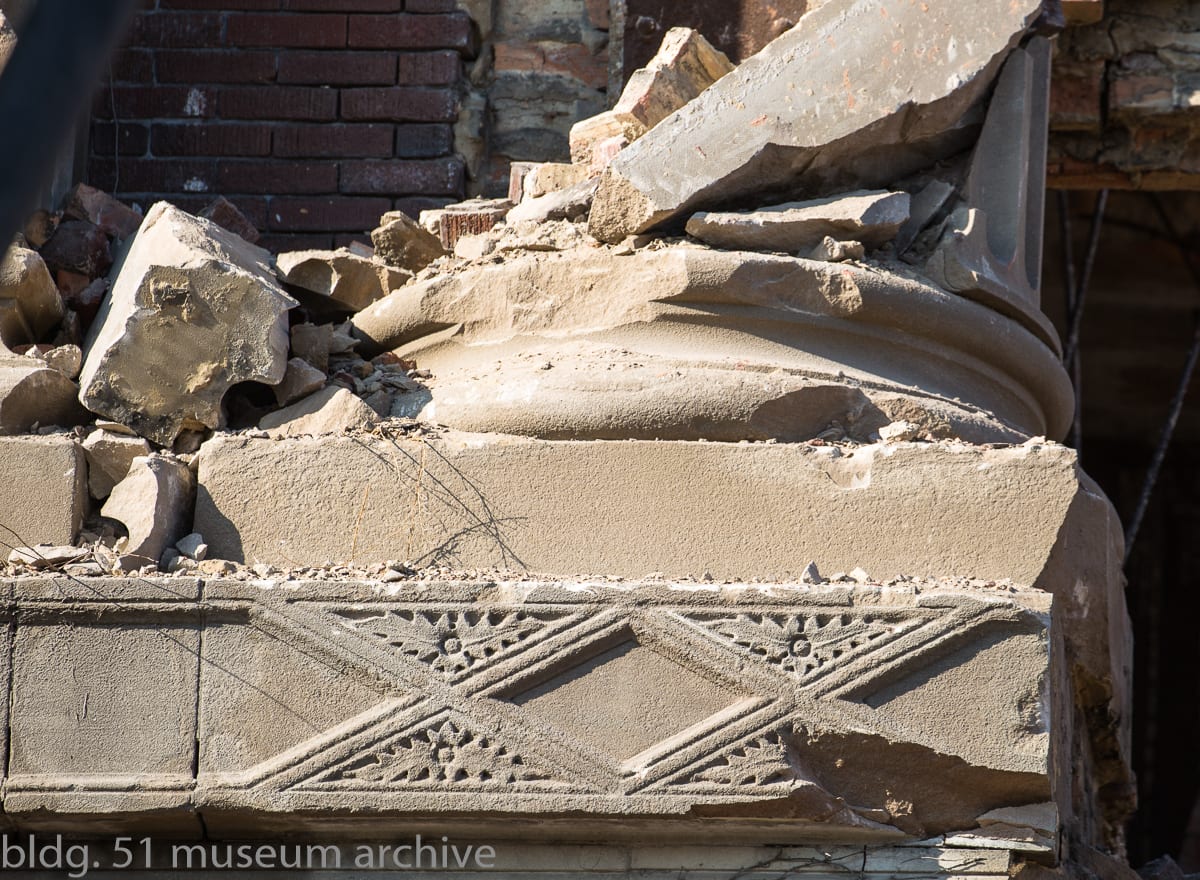
the majesty these columns possessed cannot be underestimated. As described in “indiana limestone: the aristocrat of building materials” by the indiana limestone quarrymen's association, “the very essence of a beautiful column is in its imposing upward thrust, unbroken by joint, crevice, or blemish. and what can convey a more affecting impression of dignity than a column, mightily made by nature through a billion infinitesimal deaths, mightily thought, mightily wrought, and mightily transported by the brain and hand of man, grown cunning through the passing of ten thousand generations?”
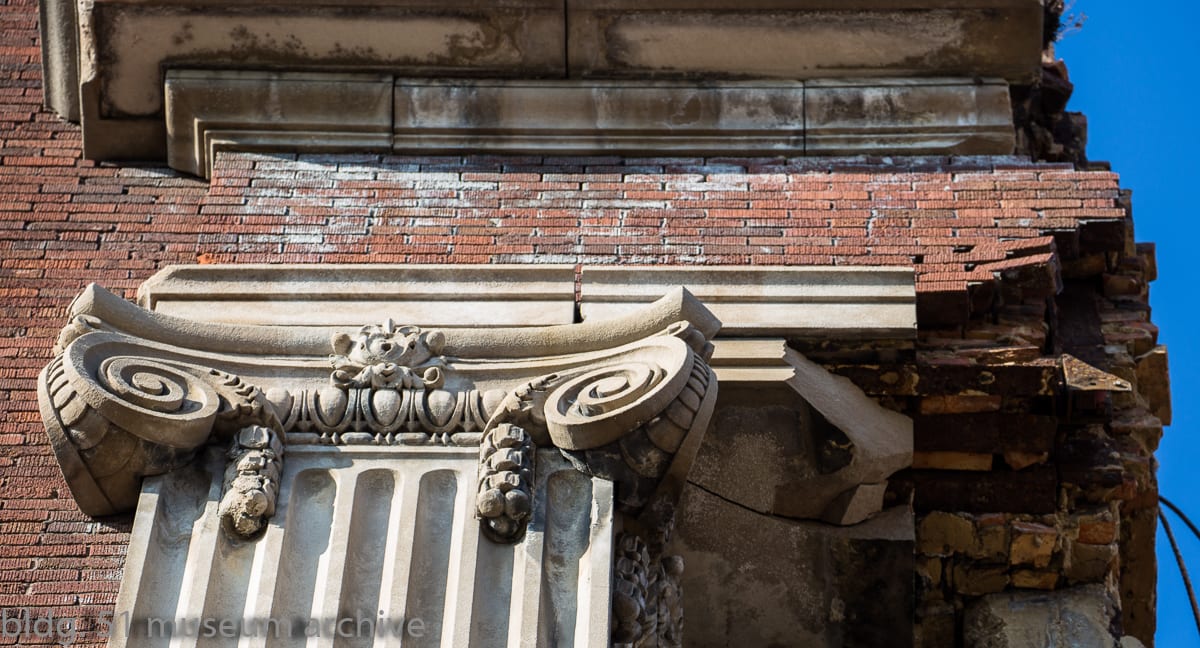
in addition to its flexibility in shaping, bedford limestone possesses a steadfast durability which time has proven. the three-sided limestone columns and capitals were as distinctly defined in the days the temple was demolished as they were when upon installation in 1921.
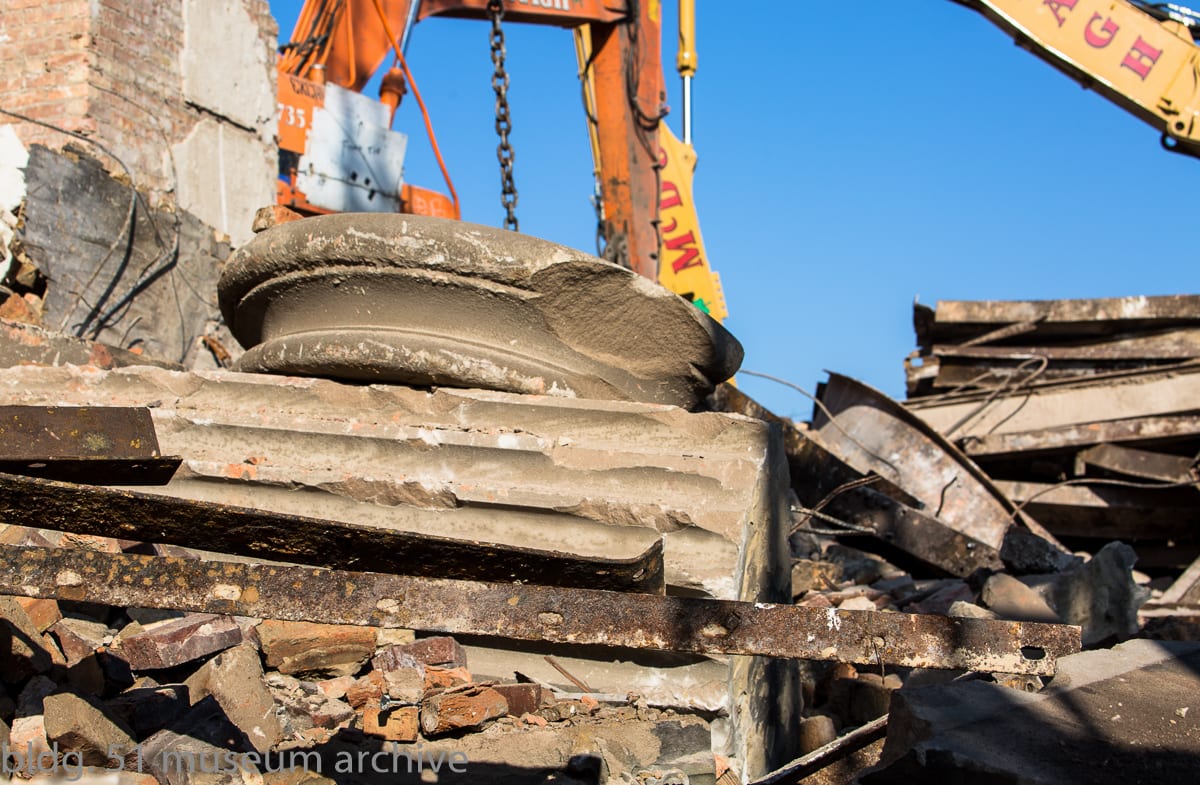
after years of neglect, exposure, and pollution, their fluted grooves were still in full possession of their original regality and they stood erect, poised, and dignified in the face of destruction. the great sphinx and the pyramids of gizeh were made of limestone, albeit egyptian limestone, but the message is the same. to build with limestone is to build for permanence.
as with many great buildings from the generations before us, this durability was passed on as a gift for us to inherit, but in this case it was soullessly disregarded. such is the societal demand for buildings that are modern, convenient, and ultimately disposable. these structures are but an epigone of the ones they replace.
perhaps its quixotic of me to hope others might appreciate the gifts bestowed upon us by great buildings and the architects who bore them, but the fickleness of man cannot be comprehended. watching the spiritless destruction of this temple reminds me of other equally inexplicable demolitions, such as the charles sumner frost-designed public life insurance building being unceremoniously toppled back in 2016.
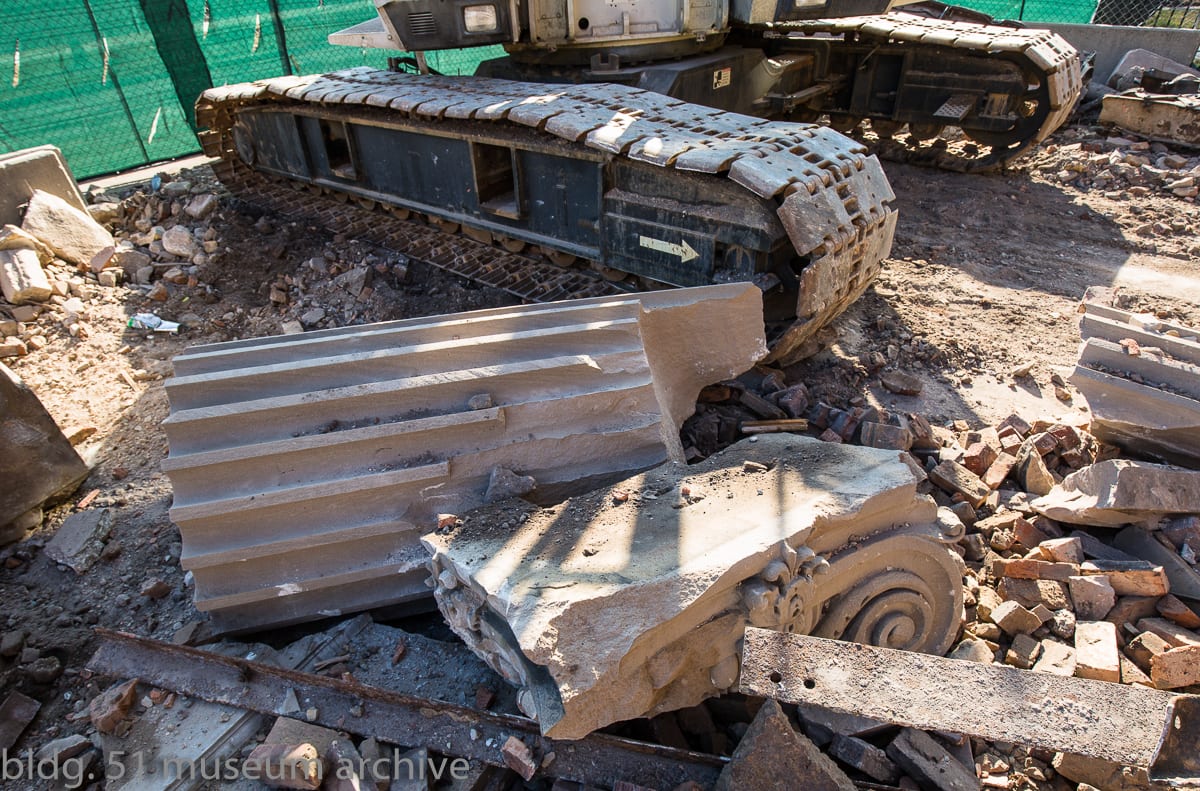
ultimately, now that that the building is crumbling before us, all we can do is remember the architect, and the tradesmen who created this once towering building. as mentioned in part 2, the stone for the south side masonic temple was provided by the consolidated stone company and the charles g. fanning & company of chicago were the cut stone contractors.

the consolidated stone company was created in december of 1894 with a million in capital from chicago capitalists who snapped up bedford quarries that had gone bankrupt or were struggling in the depression of 1893-94.
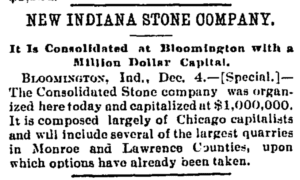
they managed a number of quarries in an area collectively known as the ‘dark hollow district’ near the town of oolitic, indiana, about a mile northwest of bedford, indiana. their limestone was advertised as the “hardest, most compact and finest grain of any indiana limestone produced”. through a series of names and transitions the consolidated stone company stayed in business until it folded in 1970.
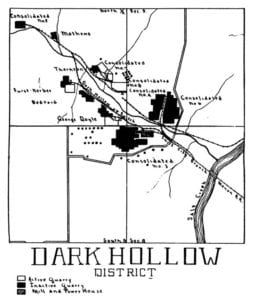
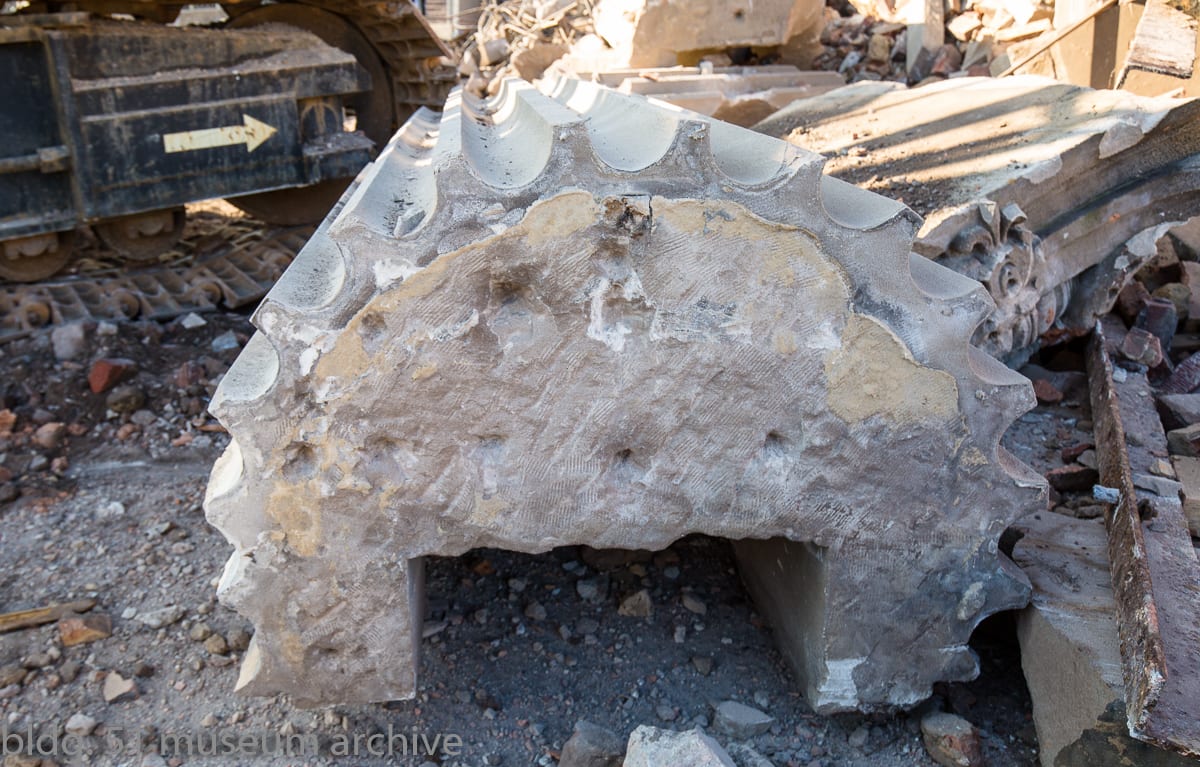
less is known about the charles g. fanning & company, however we do know charles fanning was the president of the international association of cut stone contractors for 27 years and served in this capacity during the time the temple was built. He was also head of the building construction employers association.
both organizations were extremely powerful in chicago at the time, in particular the former, in dictating who could sell stone locally and from which quarries they could secure that stone from. its unknown if the columns and other limestone ornament was cut in bedford or locally in chicago.
in an ironic twist it appears that Fanning was a collector of architectural ornament himself, as he’s listed in “the president’s report to the board of regents for the academic year of 1930” as having donated ornament to the colleges of engineering and architecture at the university of michigan.
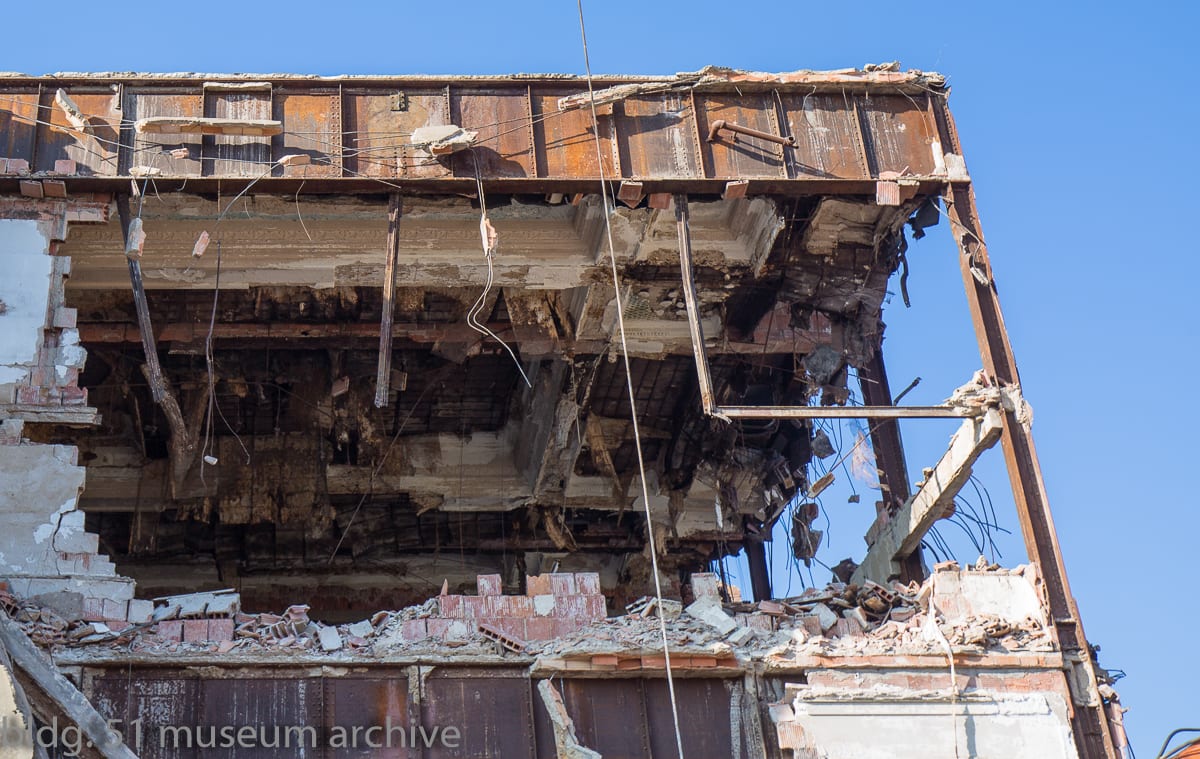
other ways to memorialize this building would be to consider and care for the bedford, limestone buildings we have remaining in chicago that are so integral to our architectural history.
its impossible to think of chicago without the edifices of the art institute of chicago (1879), the chicago tribune building (1922), the federal reserve bank building (1924), the metropolitan building (formerly the strauss building, 1924), the elks national memorial headquarters (1926), the museum of science and industry (restored, late 1920s), or the colonade of union station (1925), which are all made from bedford limestone.
countless greystones, churches, courthouses, and university buildings grace the landscape of our fair city made from this stone, all born on the backs of the men who cut it from the earth and willed its shape to create these dignified and long lasting structures so important to our identity as a city.
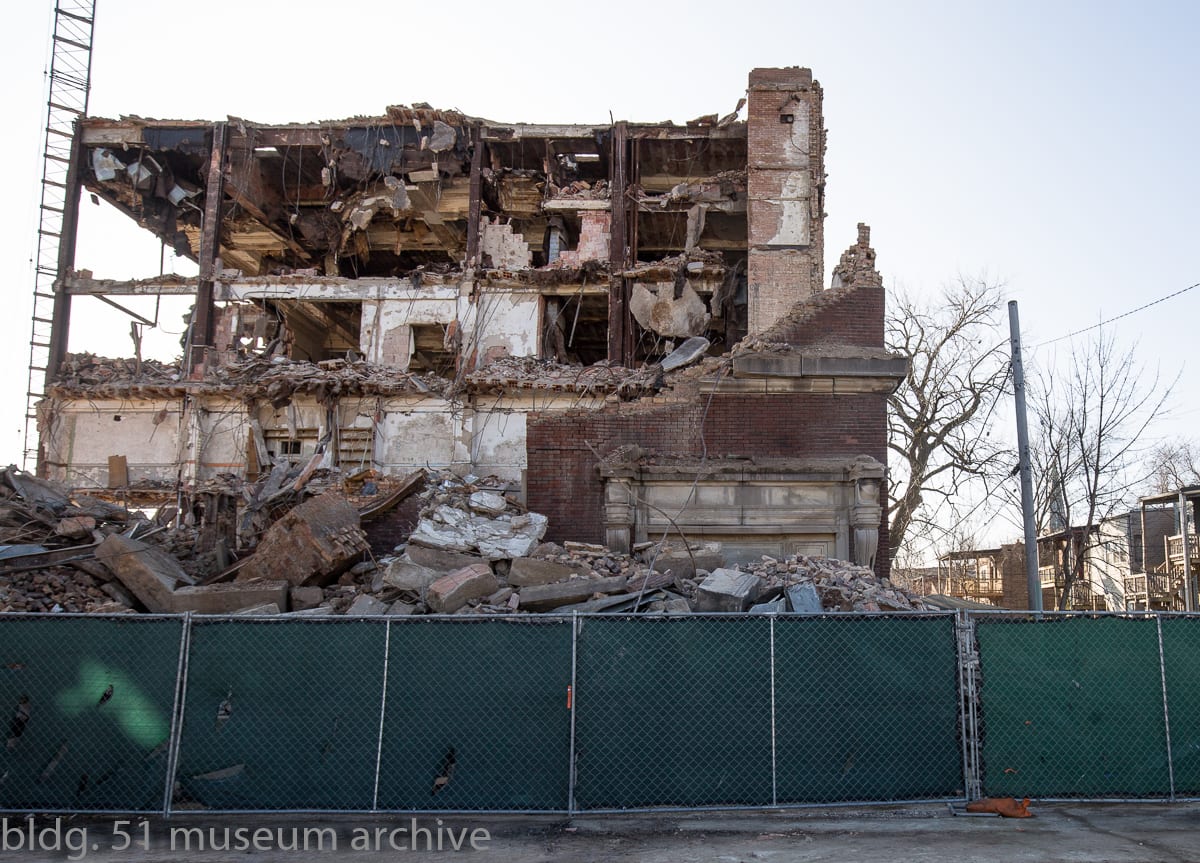
in the demolition nearing its end we will discover how limestone as a building material was used heavily until the 1930s and what might have been done with the ornament from this building had it been saved.
the destruction of hatzfeld's masonic temple reminds me of the charles sumner frost-designed public life insurance building being unceremoniously toppled back in 2016.
charles-sumner-frost-designed-public-life-insurance-building-faced-with-the-wrecking-ball

charles-frost-and-alfred-granger-designed-buildings-lost-and-found
This entry was posted in , Miscellaneous, Salvages, Bldg. 51, Events & Announcements, Featured Posts & Bldg. 51 Feed on January 31 2018 by Eric
WORDLWIDE SHIPPING
If required, please contact an Urban Remains sales associate.
NEW PRODUCTS DAILY
Check back daily as we are constantly adding new products.
PREMIUM SUPPORT
We're here to help answer any question. Contact us anytime!
SALES & PROMOTIONS
Join our newsletter to get the latest information
























